Media | Articles
Even the most challenging projects don’t tarnish the appeal of Dodge’s W150
The truck’s 360-cubic-inch V-8 fired up right away and settled into a low but stable idle. Dave slid the column shifter into drive, and the ’79 Power Wagon sauntered out of his driveway.
“Glad the rain held off,” I said, cranking down the passenger window.
Dave nodded, smiling a little. “Yeah, it’s perfect today.” It was the kind of back-and-forth that goes with nervous anticipation—we were happy about the blue skies, but both of us wondered about the drive ahead. “I’m still learning to trust her, you know?” he said, patting The Pumpkin’s dashboard.
Turns out we had nothing to be afraid of. The Pumpkin, as we affectionately call my cousin Dave’s bright orange Dodge W150, ran like a champ.

A couple years back, we replaced the former plow truck’s engine and did a few “while we’re working on it, we might as well” tasks, like bringing some shine back to the paint and replacing the shocks. Dave and his son Jimmy got to enjoy it for a summer, but electrical gremlins—a problem these trucks occasionally run into—crept in, so he brought it back to my barn for diagnosis.
Between the haphazard wiring for the plow that was once attached to it, and the cracks and corrosion on the same-age-as-me harnesses, we decided to dive headfirst into rewiring the whole truck. We wanted it to work, and to not have to worry about it again going forward. Dave’s an electrician, and I’ve taken apart my share of cars, so while rewiring the Dodge would be a new experience for both of us, we figured we could tackle it.
We weren’t wrong, but the job did remind us of the value of patience.
Marketplace
Buy and sell classics with confidence
Though some of the truck’s harnesses were available as new, others (the engine harness in particular) were either hard to come by or sold as “good” condition originals. Wary of any old wiring, we elected to go with a universal kit and a new, OEM-style front lighting harness. Functionality, not originality, was our primary focus for the W150, and this combination enabled a whole new system with factory connectors and no splices at the part of the truck that would see the most weather.
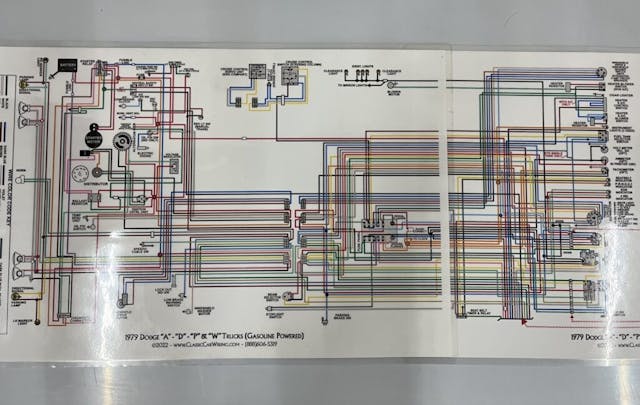
Looking at the universal harness manual and the original harness map side by side felt like the automotive version of deciphering the Rosetta Stone. Each successful connection led to a high-five. The project wasn’t without its confounding moments; on more than one Saturday we just had to stop, take the week to think about whatever wasn’t working, and then hit it hard again the following weekend. We prevailed, though, first getting the engine running, then the exterior lights, then the cabin.
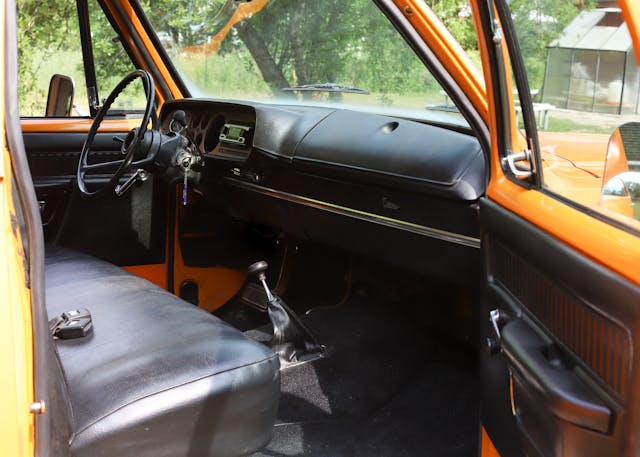
Of course, we took the time to make more incremental improvements, too. Fresh weatherstripping and chrome sills spruced up the cab’s openings. A Bluetooth-capable radio and upgraded speakers added tunes, and new, cut-pile carpet covered new floor pans on both sides. I sanded the peeling silver dash and wrapped it in a woodgrain vinyl that is much easier on the eyes. What was a well-worn work truck interior now fully looks the part for the W150’s second life as ice-cream getter and Home Depot hauler.
Dave had driven The Pumpkin 45 minutes home from my place with no problems, but this past weekend was the first time I got to enjoy the truck. There’s a good chance the pride in our work colored my assessment, but the Dodge felt confident on the road. There’s no hurry in any of its dynamics, nor should there be. Its fresh dampers made for a comfortable, controlled ride, and the 360/two-barrel combo provided an undercurrent of torque even at part throttle, like the truck has got plenty of old-man strength in reserve.
Now that the Dodge is back home, whenever they have to go somewhere, Dave’s son Jimmy asks if they can take The Pumpkin. The W150 is the perfect practical classic.
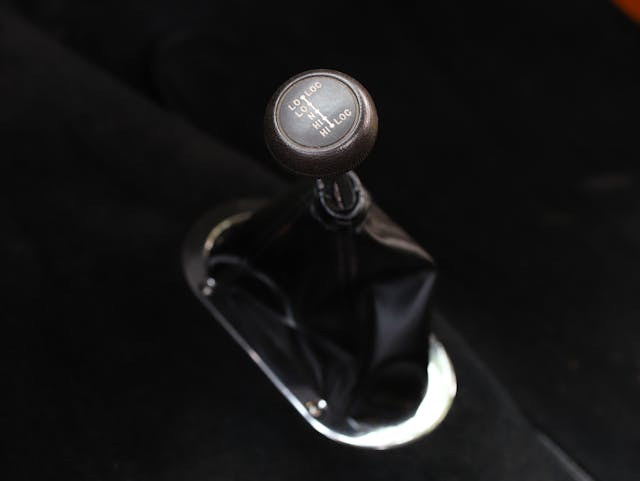
There’s nothing like a big project to give you a deeper appreciation for the platform you’re working on. The Pumpkin got me paying more attention to Mopar products, the trucks in particular. In my neck of the Ohio woods, Square Body Chevys seem to be the dominant older truck, but there are a few third-gen (1972–80) Dodge D/W series like The Pumpkin still driving around. Attrition may be the root of the Dodge’s comparative rarity up north, at least for the full-time 4×4 (“W”) models. Like Dave’s truck, many W150s were put to work plowing snow. Rough, salty winters and a working life can take their toll.
Likely because Dodge knew the many work roles for which these trucks were destined, the company didn’t skimp on engine options for its third-gen D/W trucks. Base vehicles came with a slant-six. Depending on the year you can find iterations of the Chrysler LA V-8 in 318- or 360-cubic-inch displacements, or the 400-cubic-inch B and 440-cubic-inch RB big-block V-8s. Dodge dabbled in diesel in ’78 and ’79 with an anemic, 105-horse, naturally aspirated Mitsubishi engine, but few sold and fewer exist today. Dodge returned to the diesel scene a decade later in the Ram with the now-familiar turbocharged Cummins 5.9-liter straight-six.

It wouldn’t be the late ’70s without a themed special edition, and Dodge’s 1978 Li’l Red Express is perhaps the best remembered. Though not the original factory hot-rod pickup—that title goes to Dodge’s Custom Sports Special, available with a 365-hp, 426 Wedge–engined beast from 1964—the Li’l Red Express more than held its own against cars of its era. Its hopped-up 360 sported 225 horsepower, five more than the top-trim engine in the Pontiac Trans Am from the same year. Door decals over bright red paint and vertical exhaust stacks completed the mustache-muscle conversion of Dodge’s venerable pickup. Just under 7500 were made over the 1978–79 model years. Less widely known, at least outside of Mopar truck circles, is the 1976–79 Warlock, a visual package that could be optioned on 4×2 or 4×4 models either a six- or an eight-cylinder engine.
Pricing for third-gen D/W-series pickups has followed the uptick in interest for the segment, but driver-quality examples remain affordable. Among 1979 trucks, the W-model 4x4s in #3 (Good) condition outpace their rear-wheel-drive D-model stablemates, but the two swap places when #4-condition, driver-quality examples are considered. A #2, Excellent-condition W150 will top the $30,000 mark, with a similar-quality ’79 Li’l Red Express fetching a few thousand more.
Based on insurance quotes sought by each generation, the future looks bright for the D/W-series Dodges. Interest from Gen X tracks consistently with that group’s market share, while enthusiasm from millennials and Gen Z outpaces their respective shares of the market.
Few things are as validating as a trouble-free long ride in a vehicle you’ve poured your energy into. The Pumpkin isn’t perfect, but it’s a great entry into the classic truck world.
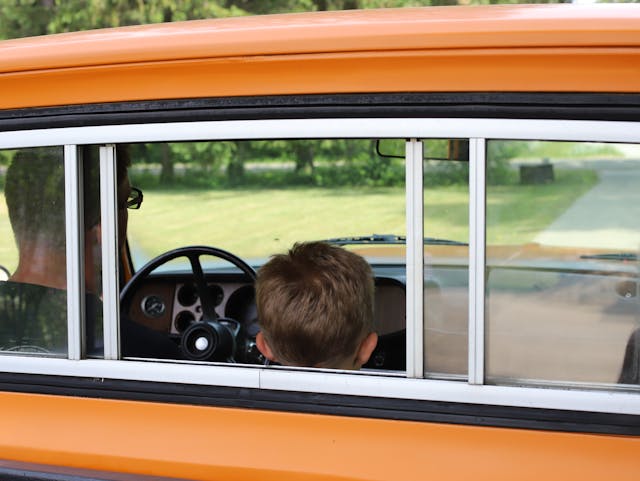
***
Check out the Hagerty Media homepage so you don’t miss a single story, or better yet, bookmark it. To get our best stories delivered right to your inbox, subscribe to our newsletters.
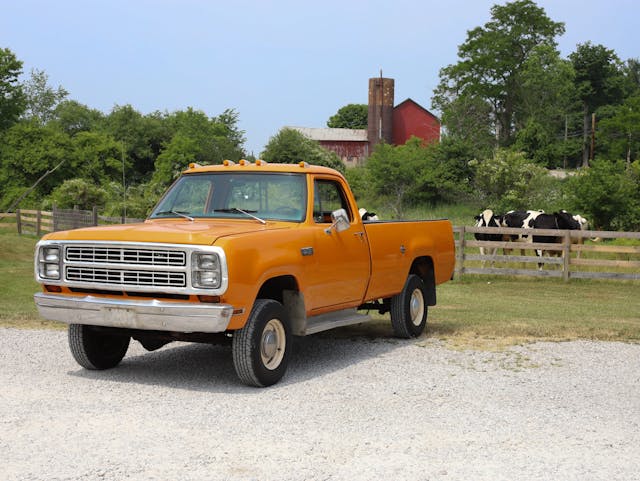















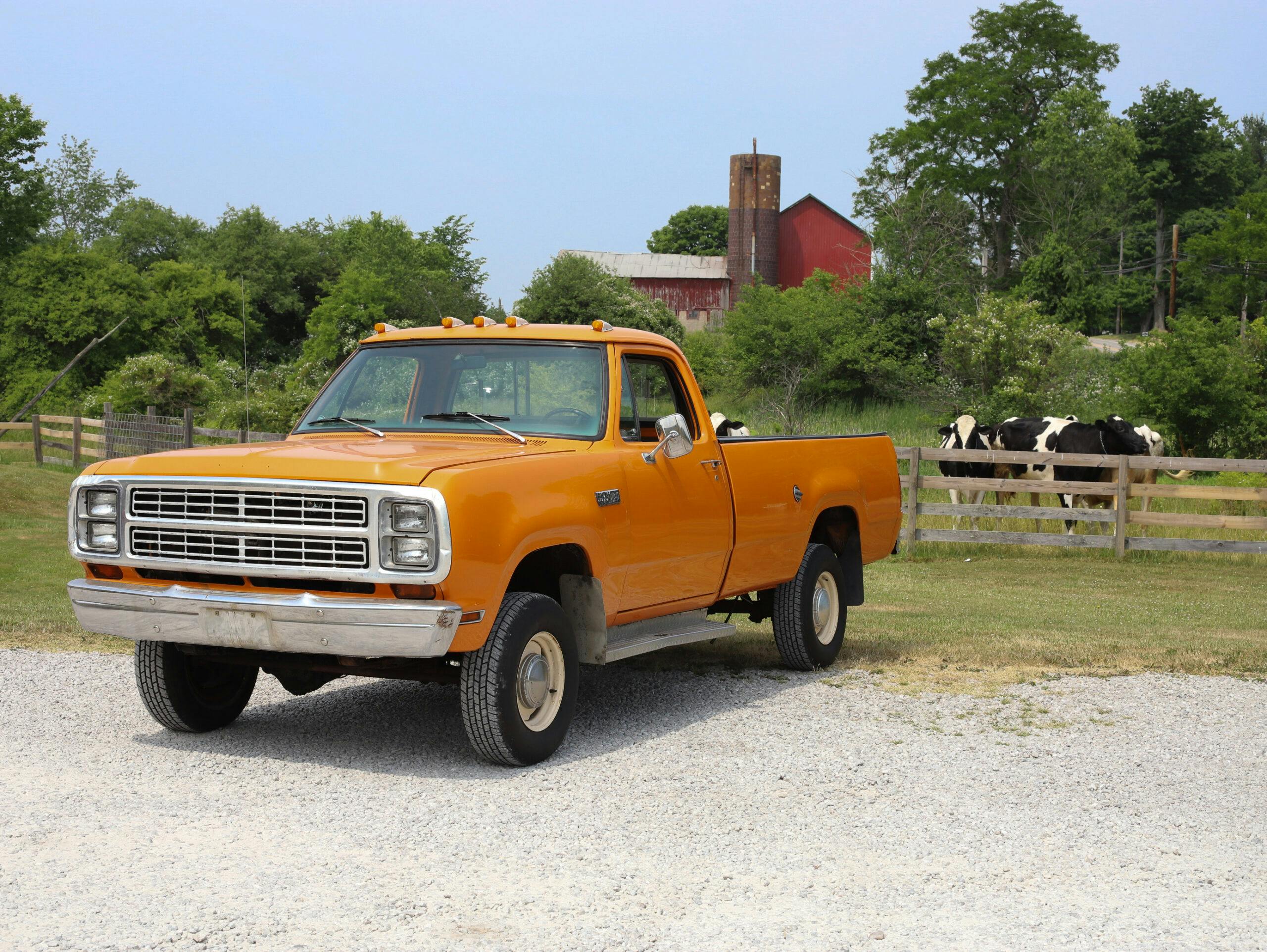
Nice truck!
Yeah, what Chuck said!
I recognized how under appreciated the 73-92 Dodge trucks were 15 years ago, and collected a few back when they were worth nothing. Looks like my hunch might pay off.
I find that era of Dodge pickups the most attractive of the time; always liked the styling along the sides and the “bird bath” hood, both reminiscent of the ’71-’72 Plymouth B-body styling.
The feature truck is very nice – I like the basic, arguably purest – iteration. Well done !
The fact that they named it, says it all! The Pumpkin.
I called my 1957 F100 “Otis”, and I miss it something fierce.
Love it!!
Nice work!
As someone who has kept around a near identical truck since about 1999, I suspect many people have come to the same conclusion as myself… A truck of this era can sit for loooong periods of time (without killing a battery with parasitic drains) and perform most any (useful) task that a new truck can do. Cheap plates, cheap insurance. No payments. No body computer that loses connection with the security system and “bricks” it because parts are unavailable/unprogramable. Mechanical parts are still easy to come by and it can be fixed with hand tools. If you just drive it occasionally to move something heavy/large, grab a load of topsoil/plywood/etc., it’s basically an ideal vehicle. The same reason I wouldn’t want a lawnmower that relied on a bluetooth connection. And if you feel like it, take it to a cruise night.
Old Dodge trucks were inexpensive until a few years ago. Now nice ones are untouchable and the affordable ones are junk.
great work save all you can the memories the vehicles time spent working together
brilliant
Pickups have become huge-ass 60k cumbersome lumps of computerized plastic. You can’t afford them, can’t work on them, can’t park them. For what? To haul some bags of mulch or go to the grocery store? With a back seat that all but turns it into a high-off-the-ground open station wagon? Yeah, yeah, I know, I wouldn’t turn one down if I could afford it, but I doubt I would ever have the love, fun, and appreciation that this “pumpkin” and thousands of other vintage pickup owners enjoy. Thanks for sharing!
The color works very well on that truck. I like it.
This truck is from the era when trucks were cool and you could get them dirty inside and out! Not the plastic covered chrome less tinny metal eighty thousand dollar, impress your neighbor in the driveway trucks today.
A truck like this is just so desirable as a daily driver if it could be well-sorted and have AC. This is much better than the $70-80K models on the dealer lots. All of the Dodge powertrains of this era (slant 6, 318, 360) are great. It is easy to access everything under the hood. I had a 1990 Dodge 2WD 318 truck for many years and wish I still had it.
I’ve always liked these Dodge trucks, I had a long bed 150 , with a 318. Typical of Dodge trucks of that era is sometimes they didn’t screw them together so well, but they ran forever.
I hot-rodded the 225 slant six in my ’82 W150 and it produces more power than the 318. You can beat the snot out of it and it keeps going strong.